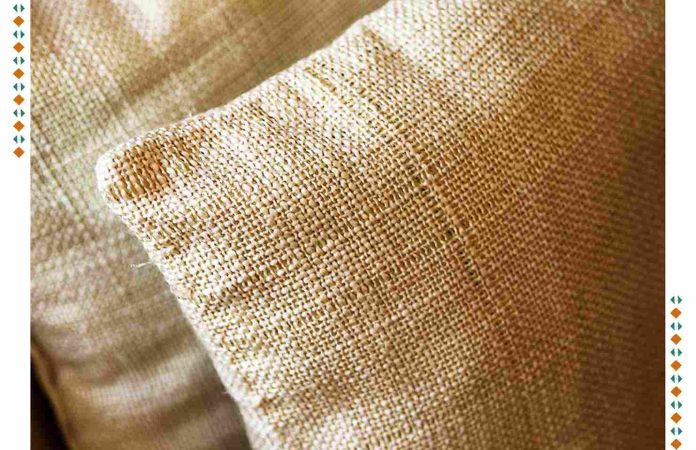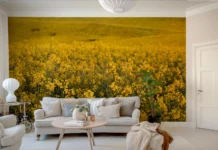Soft furnishings are essential to creating a cozy and inviting home. Without them, a space filled only with furniture can feel empty and cold. The color, texture, and pattern of soft materials enhance the warmth and comfort of your interior. Did you know that woolen fabric and wool tweed fabrics are excellent choices for home furnishings? Beyond wool, there are numerous other fabrics suitable for soft furnishings, but thick wool fabric stands out as one of the most durable and long-lasting options for your home’s decor.
With such a wide array of fabric choices available, selecting the right one can be overwhelming, especially if you’re new to home decorating. That’s why we’re here to guide you through the process.
Let’s start by defining soft furnishing material: textiles or fabrics are used inside homes, and sometimes outdoors, as elements of soft furnishings. This includes drapes, rugs, pillows, and upholstery. Soft furnishings unify the various aspects of your home’s interior design, reflecting your personal style and character. Choosing the right fabric involves more than just selecting a color—each material tells its own unique story.
Many Types of Textiles for Home Furnishings
Linen
Linen is ideal for pillowcases, bed coverings, and cushion covers. It is easy to maintain, and its natural softness makes it perfect as a cozy comforter for your bed. Depending on how it’s styled, linen can convey either a formal or casual look, adding versatility to your home décor.
Cotton
Cotton is another popular choice for pillowcases, bed coverings, and cushions. Its breathable, soft texture makes it comfortable for everyday use. Cotton fabrics are easy to maintain and suitable for a variety of interior styles, ranging from casual to formal appearance.
Velvet
Velvet adds immediate luxury and depth to any room. Perfect for headboards, pillows, sofas, and armchairs, velvet’s rich texture brings a touch of sophistication and warmth to your living space.
Silk
Silk is a superb fabric for soft furnishings when aiming to create a luxurious and regal atmosphere. Besides its elegance, silk is also hypoallergenic, making it suitable for sensitive skin. However, to preserve its delicate fibers and prevent fading, keep silk away from direct sunlight. Use it for pillow covers, bed linens, and other decorative accents.
Wool
Wool offers excellent warmth and texture, making it ideal for homes in cooler climates. Known for its natural noise-reducing qualities, wool can be used for bed linens, curtains, and pillow covers to create a cozy and calm environment.
Suede
Suede, made from the underside of animal skin, is soft yet durable. It resists wear and maintains its shape over time, making it great for headboards, poufs, sofas, and chairs, adding a warm, tactile element to your interior design.
Considerations for Selecting Soft Materials
Color
Color choice significantly impacts your home’s ambiance. For smaller spaces, opting for lighter fabric colors can make the room feel larger and more open. Light-colored upholstery paired with heavy furniture balances the room’s visual weight and keeps the space feeling airy.
Durability
Always consider the intended use of the fabric before making a selection. Fabrics vary in durability for light, medium, or heavy use. For high-traffic areas or homes with pets and children, engineered textiles offer increased durability. Avoid delicate printed fabrics in spaces prone to wear and tear. Consult with fabric experts to find the best match for your needs.
Patterns
You can mix multiple patterns beautifully, but if you’re unsure, it’s safer to limit yourself to one or two patterns per room and keep the rest of the decor simple. Consider the size of the furniture and the overall space when choosing patterns; large prints may visually shrink a room, while smaller patterns can add texture without overwhelming the space.
Advice on Selecting Soft Materials
- Avoid placing silk and linen furniture near windows with direct sunlight to prevent fading and fabric damage.
- If you suffer from dust allergies, opt for microfiber or hypoallergenic-filled cushions as they repel dust effectively.
- For homes with children or pets, consider durable, stain-resistant fabrics like vinyl, distressed leather, or outdoor-grade textiles.
- Choose washable fabrics to simplify maintenance and prolong the life of your furnishings.
- If you live in a humid climate, select mildew-resistant fabrics to protect against mold and mildew damage.
Conclusion
Soft furnishings infuse your home with character and warmth, transforming cold, empty walls into a welcoming living space. Reflecting your personality and style, they make your house truly feel like a home. At fabriclore, you can explore an extensive collection of premium materials—from robust thick wool fabrics and delicate woolen fabrics to elegant tweeds, linen, cotton, velvet, and more, available in plain and printed patterns. Additionally, you can order customized fabrics tailored to your exclusive tastes, ensuring your home décor is both unique and lasting.
Choosing the right textiles for your home is not only about aesthetics but also about functionality and comfort. Fabrics like wool and tweed provide excellent insulation and durability for colder climates, while cotton and linen offer breathability and softness suitable for all seasons. Incorporating a variety of textures and patterns can elevate your interior design, creating an inviting and cohesive atmosphere. Remember, investing in quality soft furnishings enhances your living experience and adds timeless charm to your home.

























